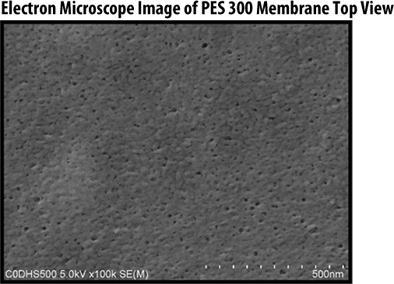Definition of a Membrane
A membrane is a thin layer of semi-permeable material that is used for solute separation as transmembrane pressure is applied across the membrane. The degree of selectivity is largely based on the membrane charge and porosity. Membranes with symmetric pores are more uniform, while asymmetric pores have variable pore diameters. In addition, porous membranes are mostly used for microfiltration and ultrafiltration, as separation is based on particle size, while non-porous membranes are used more for nanofiltration and reverse osmosis processes.Filtration membranes can be classified into 4 main categories: Microfiltration, Ultrafiltration, Nanofiltration, and Reverse Osmosis. Microfiltration is commonly used as a pretreatment or clarification step prior to other membrane processes for the removal of fats and large macromolecules. Ultrafiltration allows for the removal of all bacteria, as well as some viruses, and is commonly used throughout the dairy and food industry for the concentration of proteins and juices. Nanofiltration and reverse osmosis membranes are a type of thin film composite, and are commonly used in desalination applications due to their ability to separate monovalent and divalent salts.
CASE STUDY
Applications
Resources
MEMBRANE RESOURCES
- Definition of a Membrane
- Membrane Materials: Organic vs. Inorganic
- Pressure-Driven Membrane Filtration Processes
- Concentration Polarization in Pressure-Driven Processes
- Degrees of Membrane Separation
- Flux Behavior in Membrane Processes
Module Configurations & Processes
-> View all membrane resourcesTUTORIALS











